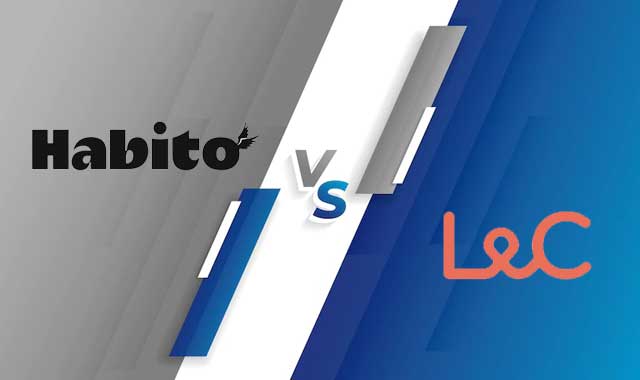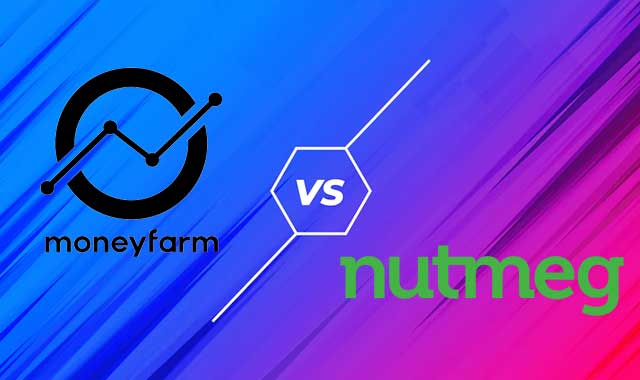WealthSimple vs Wealthify: Wealthsimple and Wealthify are two of the most popular “robo-advisors” on offer. They provide you with a personalized investment portfolio, managed by algorithms but still comforting in their familiarity – at least for those who have experienced bad financial advice before!
The critical difference between these services is that while some may automate certain aspects, such as asset allocation or re-balancing, others do not. Wealthsimple hires human experts to monitor your investments from time to time, so if you’re the type of person who likes to have someone to talk about your finances in real-time, this might be the better.

Robo-investing is a modern way to make money that allows you to do all the legwork for your investments. Pick what stocks and funds sound right up your alley, set some boundaries on how much risk/return ratio they should have within those guidelines (there are many options), and then let an algorithm take care of everything else!
With an automated investor, you can invest in exchange-traded funds (ETFs) and let the systems do all your work for dividends. You won’t need to worry about updating your portfolio because these investments will be made automatically based on what’s going up or down stock market-wise!
The difference between the providers mainly comes from how much money you can invest. You might be able to take advantage of some special offers if your salary falls within certain limits. Still, for most people, this will not make a significant difference in what they choose over another company with similar offerings.
The critical statistics on both providers are very similar- both have stocks and shares ISA available, which lets investors put away $20K without paying taxes in a given year.
Products on Offer: Wealthify vs Wealthsimple
Wealthify and Wealthsimple are two different companies with similar offerings. While they offer stocks, shares, ISAs, and private pensions for retirement investing, the features vary depending on which service you sign up to use!
Both Robo-investing providers let you invest safely with a bit of top-up from the government, but money is locked until 55 years old -or less if using specific options!
Here, only Wealthsimple is the provider that offers a lifetime ISA. It lets you save up to £4,000 per year for your retirement or your home; that’s your choice. The government contributes an additional 25% for every £4,000 investment. It grows automatically without risk!
Fees: WealthSimple vs Wealthify
Wealthsimple is a financial management firm that like high-net-worth individuals (HNWI) to invest their money. It offers different levels of services depending on the amount you want to invest, as well as providing additional benefits for those who put more than £100k or 500k inside the platform!
Wealthsimple may be the future of investing. It charges 0.7% on investments up to £100K and additional fees at an average rate of 0.2%. As your investment increases, the cost move to the lower side. But that doesn’t mean you should go with high-value accounts entirely! Moreover, If your funds exceed 500k pounds, they’ll offer personalized service with dedicated advisors. Who will always have an eye out looking after them each year through regular reviews? Just think about how pleased mom would feel knowing her portfolio was being watched over by someone she trusts very profoundly.
On the other side, Wealthify has a low flat rate of 0.6% on your investment amount, plus fund fees of around 0.2%.
Stated and frankly, this means that for every $1 you put into an account with Wealthify, they will charge only 60 cents! The overall fee for ethical investing is 0.66%. It is one reason why their firm values ethical investing over other kinds since it can provide such great returns while still being fair towards both investors AND lenders regarding compensation rates.
Wealthify has a cost calculator on its website to see how much it would cost for your investment. If the amount sounds good, go ahead and invest! While on the other side, Wealthsimple doesn’t provide an easy-to-use fee calculator on their site. So, you have to do that math manually.
Study Resources: Wealthify vs Wealthsimple
When it comes to learning resources, Wealthsimple comes out on top. It has guides, videos, walkthroughs and access to advice (although the latter is only available once you invest a certain amount).
Wealthsimple has an edge when it comes to learning resources. They offer guides, videos and walkthroughs that can help you learn how to invest your money in different investments. Moreover, the walkthrough isn’t available until after certain investment milestones have been met!
Wealthify is an excellent resource for those who want to use their funds with care, but it only has guides in learning resources. Neither provider offers demo accounts. But that’s okay because there are other ways of getting started. Just like reading some articles or watching videos on YouTube, which will help teach you all about how they work!
Other Features: Wealthify vs WealthSimple
With so many available options, it’s hard to know which provider will best suit your needs. But if you’re looking at the features and not just the price, then there is no reason either one of these companies can’t meet them!
They both have apps for iPhone and Android devices; besides that, desktop access is also available.
Wealthsimple Pros and cons
Pros
- Analyze your portfolio with a variety of market and risk factors for free.
- Assistance from human advisors.
- Ethical Investment is available.
- No minimum deposit is required.
Cons
- High annual fees.
- Fewer tools available.
Wealthify Pros and Cons
Pros
- Manage your portfolio on the go via the app.
- One-time or regular payments are possible with flexible deposits.
- There are no additional fees to withdraw your funds.
- Live chat, phone, or an internet message are all options for customer care.
Cons
- Managed investments have less control.
- There are no LISA or Cash ISA accounts available.
WealthSimple vs Wealthify Which one is Right Fit?
Wealthify is a good option for those who want to invest without the hassle of managing their portfolios. Ethical investing seems popular right now; it is no surprise, given how much easier it can be with Wealthify – you don’t have all these pesky ethical concerns pressing down on your shoulders!
Wealthify is an excellent option for those who want to invest their money with the help of an experienced professional. If you’re investing £100,000 or more, other platforms might be worth considering, just like Interactive Investor and Hargreaves that offer lower fees in exchange for potentially higher returns on your investments.
Conversely, Wealthsimple offers a diverse portfolio of investments, including SRI and halal stocks. Moreover, it provides live access to financial advisors, so you can get advice anytime via email or call! In addition to the above — no minimum deposits are required – sign up now. All the above features — put it on par with other Robo advisor brands with higher recognition!
Wealthsimple’s advisory fees are lower than other Robo-advisors, but their account management is not. Management charges can have a significant effect on investment returns over time. So, it might not be worth the extra cost for some people with smaller accounts.
Is my Money Safe with Wealthify or WealthSimple
You can rest easy knowing that both these companies are protected by FSCS, which means your deposits up to £85k will be safe.
What Other Options are Available?
Wealthify is playing in the $2 trillion global investment and management industry from a new angle. At the same time, Wealthify combines ISA and general stock market features into one service. The competitors include Moneyfarm, with their investments in private equity for individuals. On the other side, Nutmeg offers both types to suit your needs, whether you want traditional funds that pay off over time, like government bonds, rather than short-term high flyers such as stocks.


